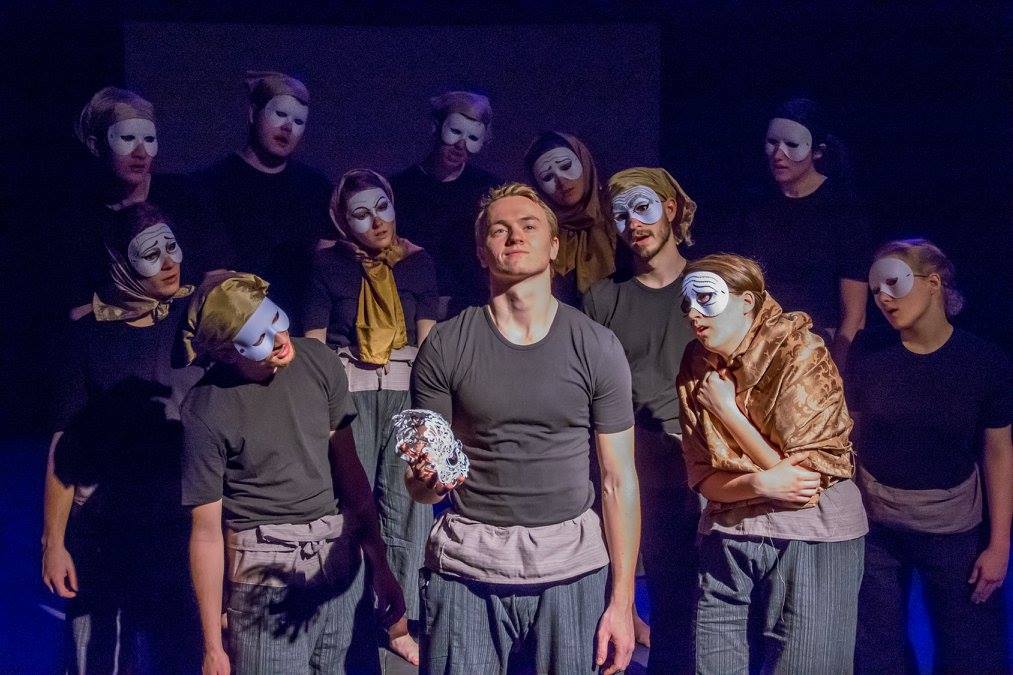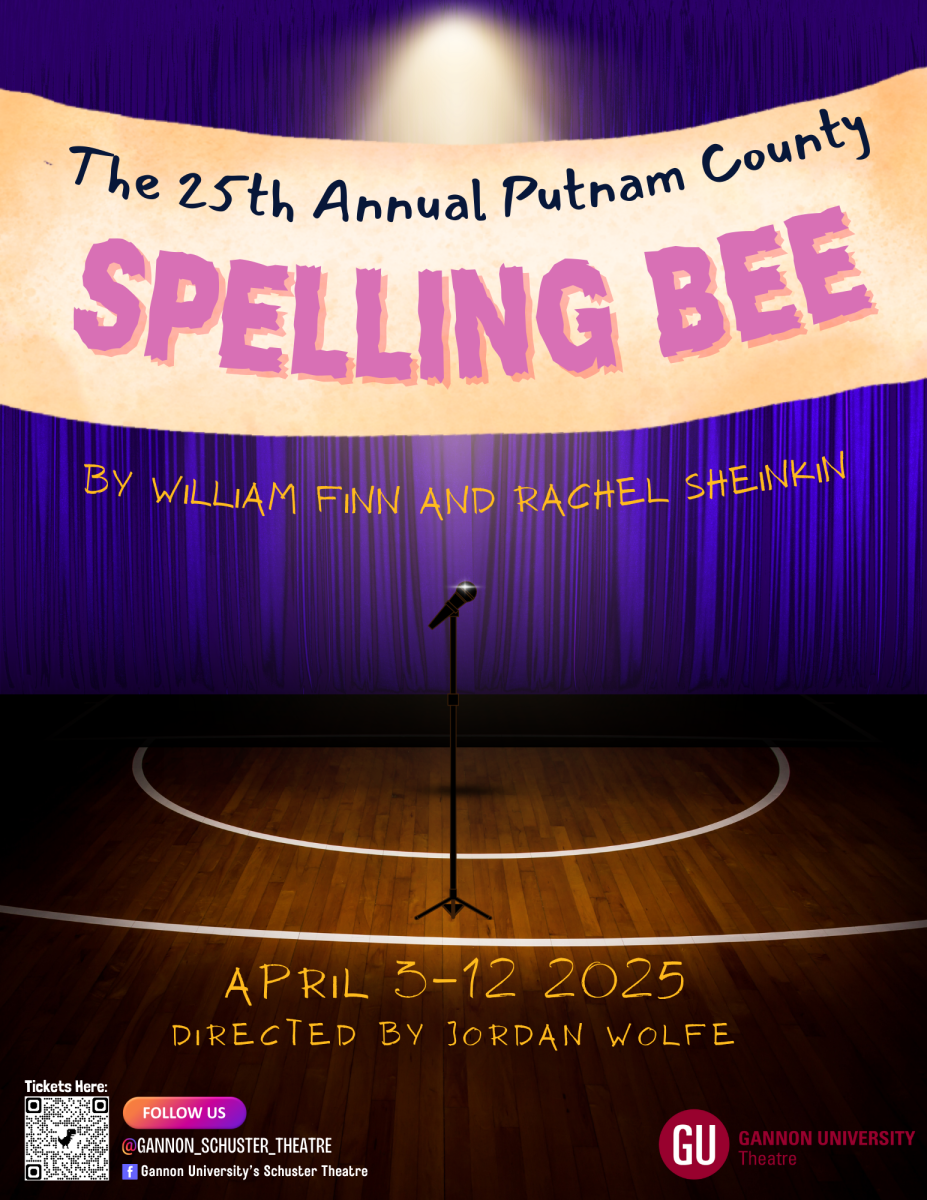It was difficult to find an open seat in Gannon University’s Schuster Theatre on Wednesday as students, faculty and community members came together to see the first performance of “Lazarus Laughed.”
The play, which was written by well-known American playwright Eugene O’Neill in 1925, was performed as part of Fringe Fest Erie 2016 and adapted and edited specifically for Gannon by visiting professor of theatre, Alaina Manchester.
The show, which had its final presentation Sunday, was very well executed, even with the “limitations” of formal, stylized speech, a small number of actors and a scarce set.
One of the most intriguing facets of the Schuster Theatre adaptation of “Lazarus Laughed” is that although O’Neill originally anticipated a cast of over 500 characters, the Gannon cast was able to adapt the show to be successful with a cast composed of a mere 12 student actors.
To fill the void, audience members were supplied with white masks upon purchasing their ticket and were asked to wear these masks throughout the performance in order to create the illusion O’Neill had imagined when writing the original script.
Additionally, cue cards were projected on a screen at the front of the theater with lines for audience members to recite at times to make up for the lack of cast members available and form a fully functioning “chorus.”
Giving the audience the opportunity to fully participate in the production provided a unique experience for those in attendence, and one that an audience member would not typically expect from a play.
To offset the lack of cast members available to play main characters, students were expected to play multiple roles throughout the production.
Although this can often be a difficult technique to pull off, especially with a small cast, student actors did an exemplary job of this through their use of quick changes, new costumes and masks that made it appear like a whole new cast was on stage when changing from one scene to another.
Cast members should also be saluted for their extremely realistic and convincing execution of stage violence.
The production was choreographed primarily by Manchester; however, she was assisted by cast member Michael Haas, who served as co-choreographer of stage violence.
Throughout the play, there are many scenes where the cast engages in fight scenes, often using props such as fake swords.
Many of these scenes end in deaths, and cast members also did a very respectable job remaining motionless as their characters were eliminated.
All in all, the production was successful due to innovative techniques that the Schuster Theatre was able to incorporate into the play.
Through the use of audience participation, clever employment of cast members to multiple roles, and stellar execution of stage violence, the cast was able to put a unique spin on a well-known American theater piece.
KATE ROBB
[email protected]








